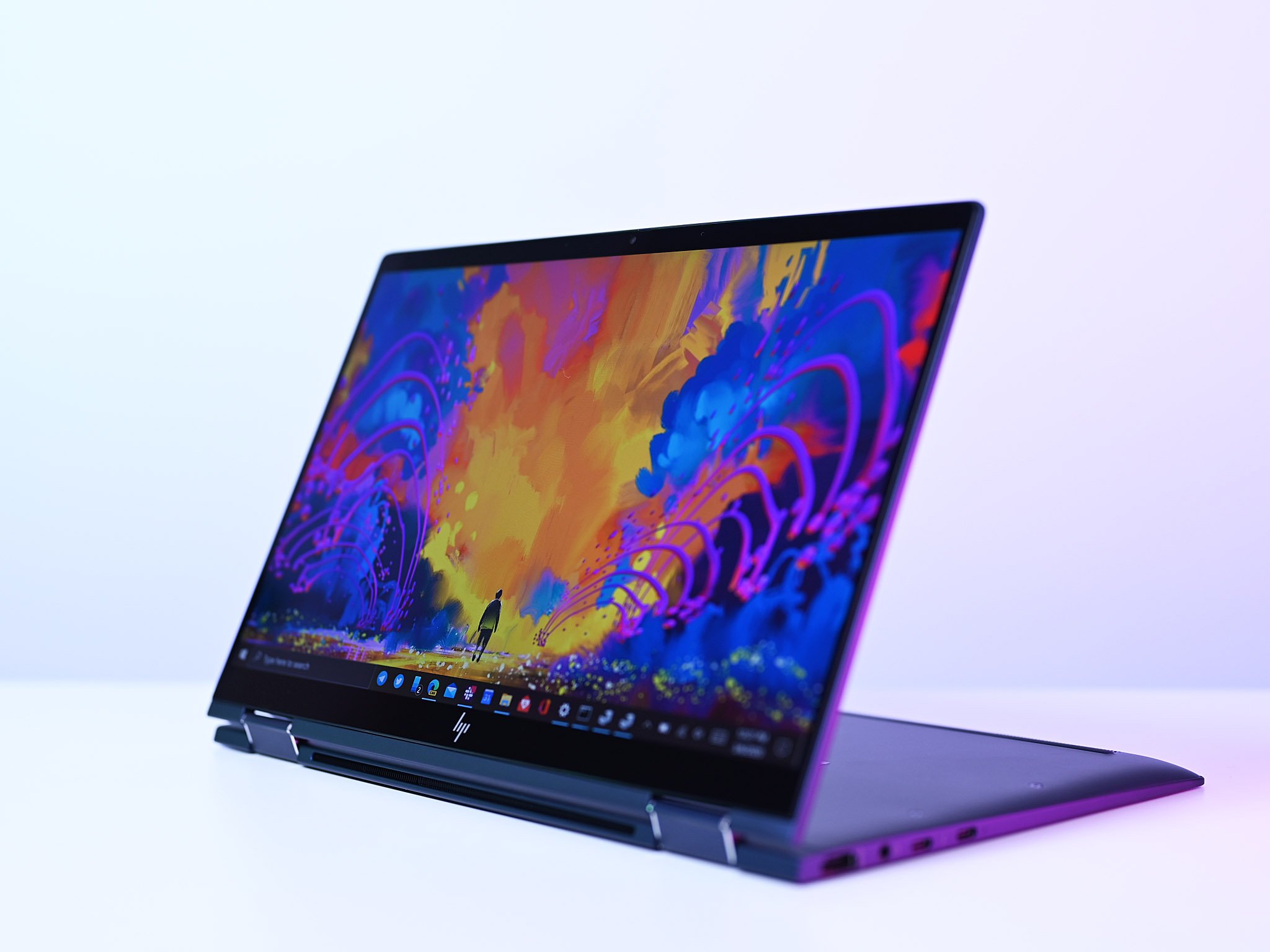The HP Elite Dragonfly was announced in late 2019 as a new Ultrabook built for the discerning business user who also wants an excellent all-around laptop. On paper, there's a lot to like about the Dragonfly because it seemingly does everything. It's a convertible, supports inking, has quad-speakers, an oleophobic outer layer, and optionally supports 4G LTE.
However, my review has taken much longer than anticipated. Part of that is because the Dragonfly has a few rough edges on it that keep me from loving it — even if I like the overall idea of the Dragonfly. It's still a great laptop and certainly one of the most interesting, but HP needs to sort some of the software issues — especially around LTE — for me to make this my daily.
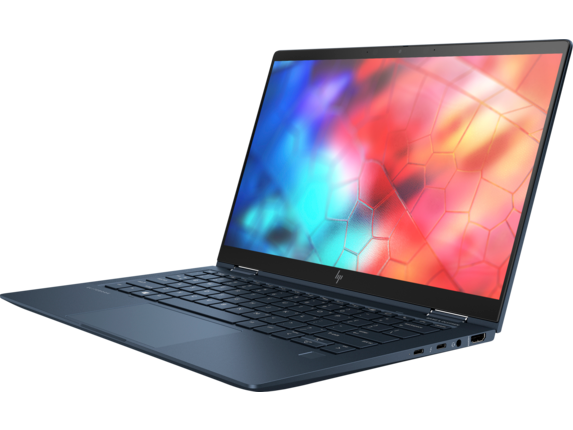
From $1,660Bottom line: HP's pricey Elite Dragonfly brings an outstanding design in a light and sophisticated package. With an exceptional display, keyboard, audio, and packed with business features, HP has made one of the best-looking laptops around. Some quirks hold it back from perfection, leading us to recommend it but with some caveats.
For
- Gorgeous design and craftsmanship
- Excellent port selection
- Lots of features and configuration options
- Outstanding audio and typing
- Optional 4G LTE (soon 5G)
Against
- 4G LTE modem is finicky
- Battery life is just OK
- Only 8th Gen Intel due to vPro
- It gets warm, has a noisy fan
One looker of a laptop
HP Elite Dragonfly design and concept
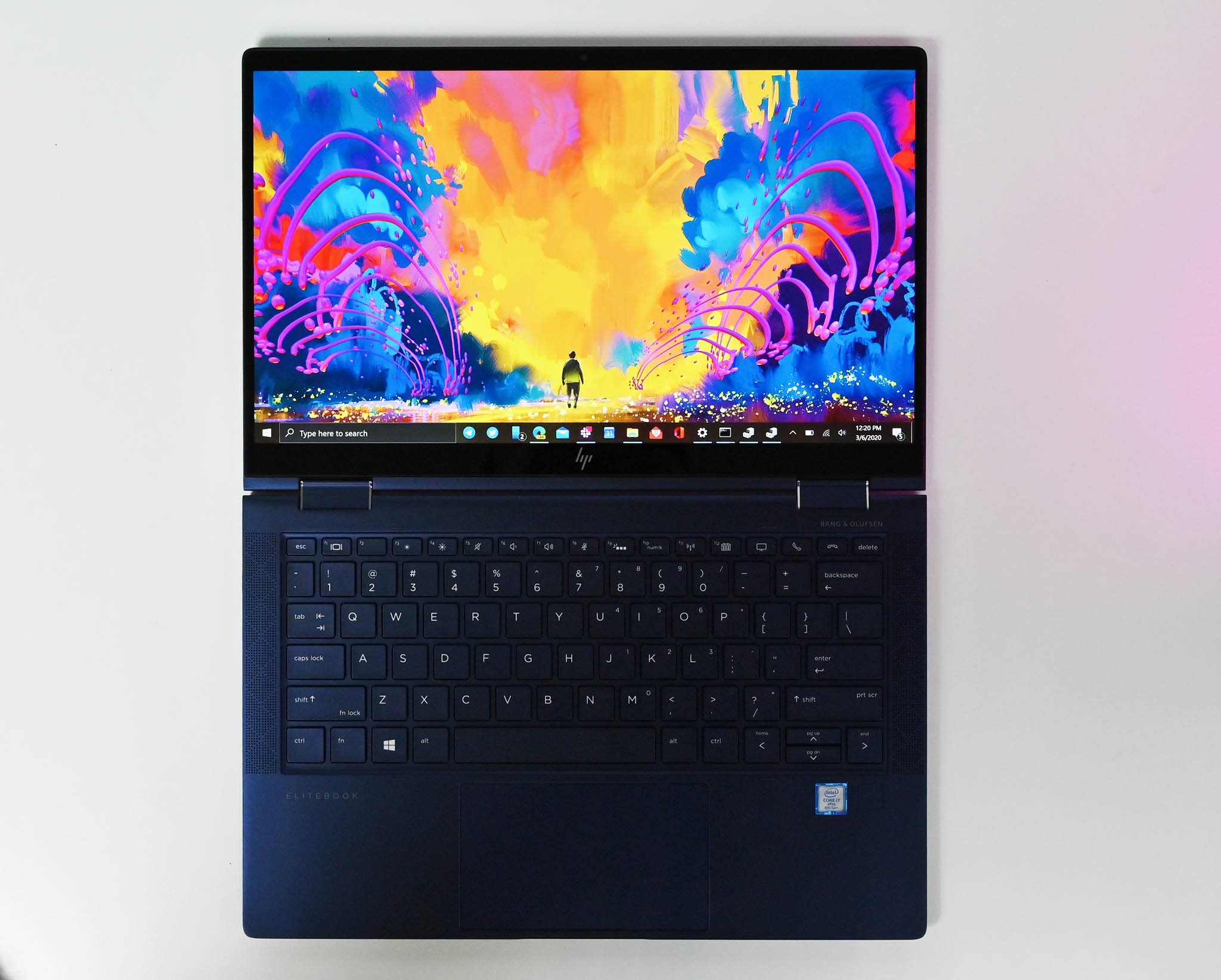
HP has two distinct premium laptop lines: Spectre, for consumers, and EliteBook for business. The Dragonfly falls somewhere in between hence the "Elite" in the name and "EliteBook" lightly stamped on the keyboard deck. I believe it's the first attempt by HP to bring some consumer frills to the button-up business world. And it works.
HP's Elite Dragonfly brings an outstanding design in a light and sophisticated package.
I won't mince words: I think the Elite Dragonfly is the most beautiful looking laptop HP has made yet. Sure, Spectre laptops are flashy. And those silver EliteBooks are professional looking. But the Elite Dragonfly's "iridescent dragonfly blue" is jaw-droppingly gorgeous. It shimmers slightly in the light, it's matte to the touch (read: grippy), and it stands out from the sea of black and silver Ultrabooks found on every store shelf.
I also want to highlight this "iridescent dragonfly blue" is also oleophobic. That's fancy talk meaning your Elite Dragonfly will barely pick up fingerprints on the chassis. I've been asking for this for years, and HP has delivered. It's simply brilliant.
| Category | Elite Dragonfly |
|---|---|
| OS | Windows 10 Home or Pro |
| Display | 13.3 inches, 16:9 aspect ratioFull HD, Full HD w/Sure View, 4K UHD HDR400 |
| Processor | Intel 8th Gen U-series w/vProCore i3, i5, or i7 |
| Graphics | Intel UHD 620 |
| Memory | 8 or 16GB DDR3 (2,133MHz) |
| Storage | Up to 2TB NVMe512GB PCIe NVMe w 32GB Intel Optane H10 |
| Front camera | 720P HD, HD Privacy IR webcam |
| Security | Face and fingerprint |
| Connectivity | Wi-Fi 6, Bluetooth, 4G LTE Cat 16 (optional) |
| Ports | 2x Type-C with TB31x Type-A 3.1HDMI 1.4Headphone |
| Audio | Quad Bang & Olufsen |
| Battery | 38 or 56 WHr16.5 or 24.5 hours battery life |
| Dimensions | 11.98 in x 7.78 in x 0.63 in30.43 cm x 19.75 cm x 1.61 cm |
| Weight | Starting at 2.2 lb (0.99 kg) |
| Colors | Dragonfly Blue |
| Price | Starting $1,629 |
| Availability | Now |
Build quality is excellent. The 2-in-1 hinge is stiff, but as HP explained, business users and companies tend to demand sturdier designs as these laptops need to last years of abuse on the road.
Spec-wise there's nothing too unusual for a business-class Ultrabook. Being a business laptop, HP offers the Intel Core i3-8145U, i5-8265U, i5-8365U, i7-8565U, and the top-tier i7-8665U. HP is using only 8th Gen Intel U-series chips, but that's because it supports Intel vPRO, which is a necessity for enterprise device management.
Intel is coming out with 10th Gen vPro chips later this year, and HP has already announced plans to refresh the Elite Dragonfly when that happens. Indeed, the company is adding 5G in late 2020 and now offers its patented Sure View privacy display as an option.
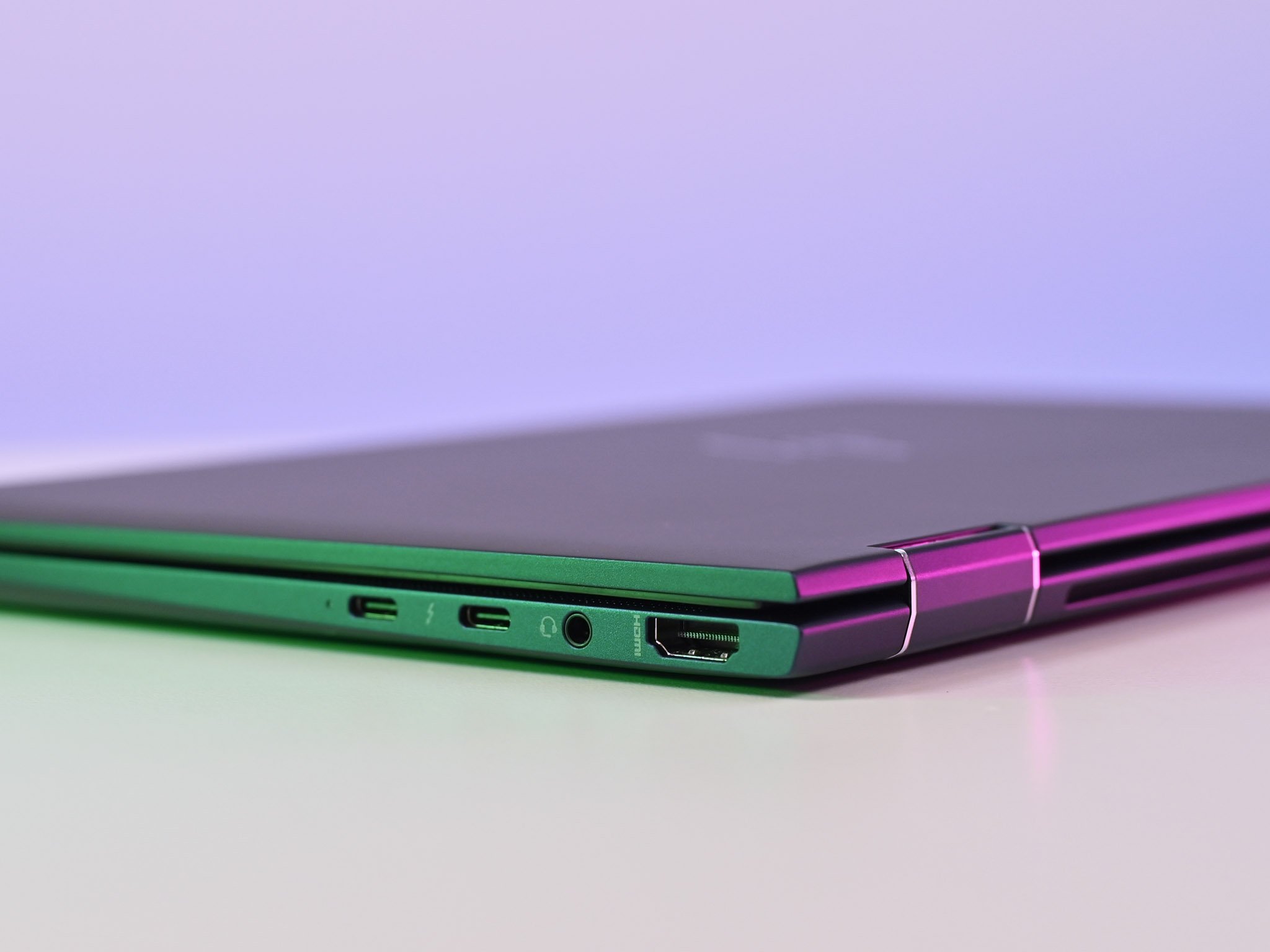
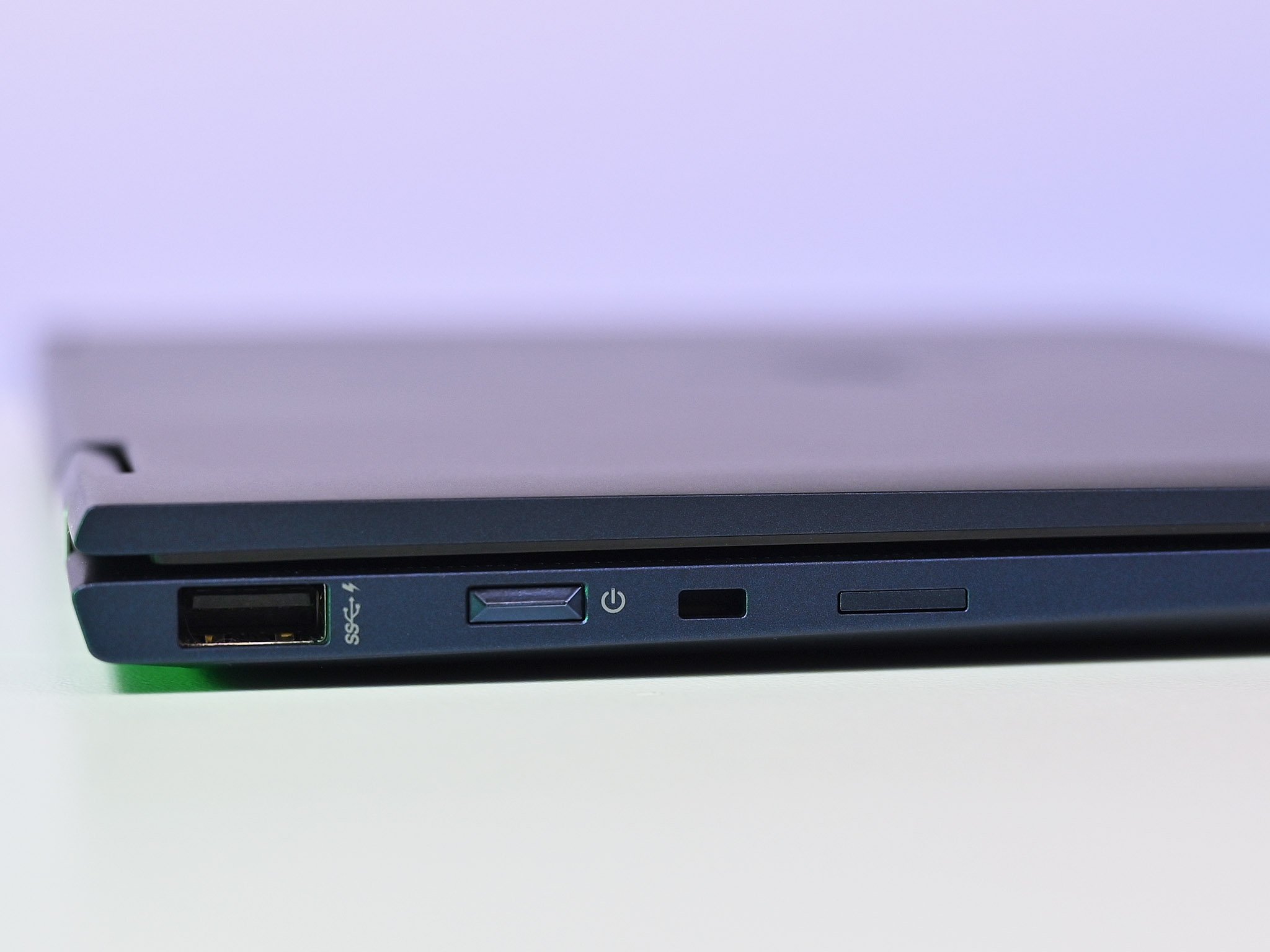
RAM goes up to 16GB (soldered), and storage ranges from 256GB SATA up to 2TB of PCIe NVMe. Wi-Fi 6 (Intel AX200) and options for global 4G LTE (Cat 9 or Cat 16) are also available.
Port selection is robust with two Type-C with Thunderbolt 3, one USB Type-A 3.1, and even a full HDMI 1.4. Port for video out. Charging is done via the included 65-watt Type-C charger.
All these options and premium pieces drive up the cost of the Elite Dragonfly from a modestly-expensive $1,660 to a staggering $3,500 with 4K touch display, LTE, 16GB of RAM, Wacom AES 2.0 pen, and 2TB SSD.
Besides looking great, it's also thin and very light. While the version with a smaller battery is just 2.1 pounds, our review unit has a larger 4-cell battery and comes in at 2.5 pounds (1.13kg). That's still incredibly light for a 13.3-inch Ultrabook with all that technology crammed inside.
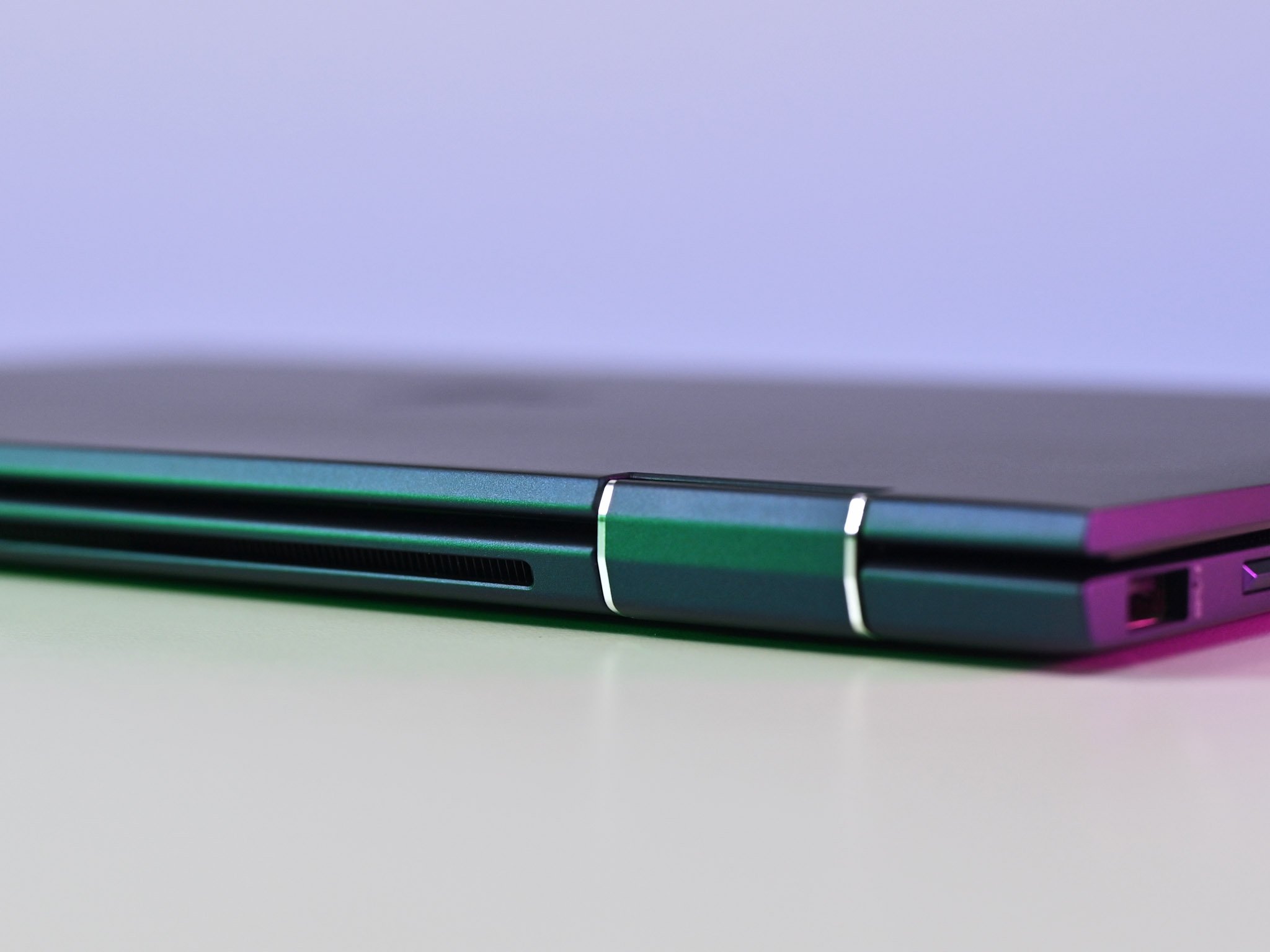

Did I mention the Elite Dragonfly also has recycled ocean-bound plastics in the speaker covers?
My only complaint on the Dragonfly's design is the power button. It's located on the side and has a nice LED light, which makes it available no matter the position of the convertible (good). Still, it also makes it very susceptible to accidental pushes (bad). A keyboard mounted power button would be better.
For this review, my test unit has 16GB of RAM, i7-8665U, 512GB PCIe NVMe with 32GB Intel Optane 3D Xpoint, 4G LTE, and a full HD display with the 3rd generation Wacom HP pen.
An excellent screen
HP Elite Dragonfly display and camera
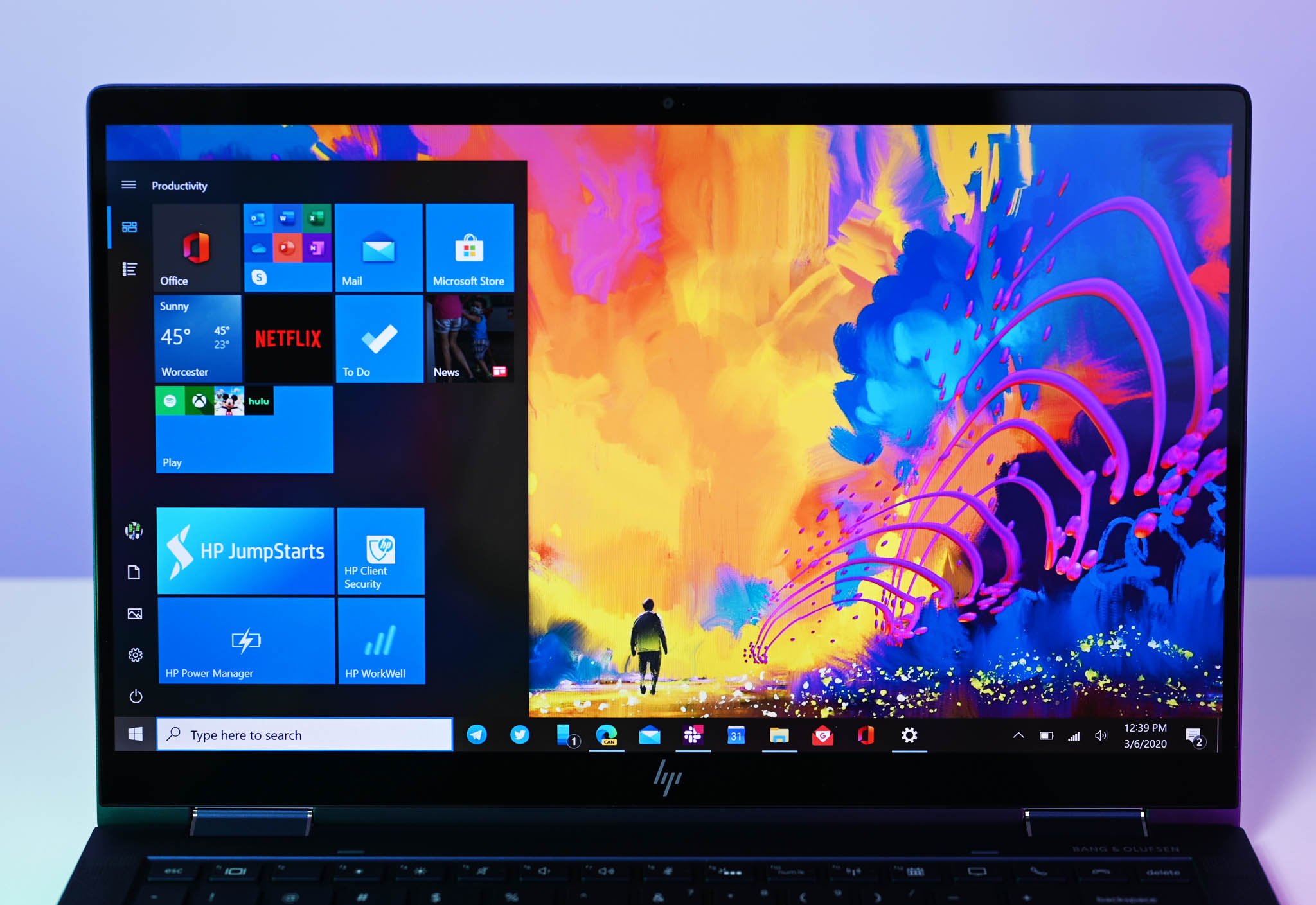
While HP offers a dazzling 13.3-inch 550 nit 4K touch screen option, my unit had a more modest full HD (1920 x 1080) configuration. That full HD option is the best bet for battery life as it is the new low-wattage (one watt) technology.
The Elite Dragonfly is the most beautiful looking laptop HP has made yet.
HP has done a great job with the display sourcing. While I did notice more than usual amounts of screen bleed (not in use, just during booting), the color accuracy and brightness were first-rate.
In my tests, the full HD display earned 100 percent sRGB, 77 percent AdobeRGB, and 81 percent of DCI-P3. Brightness peaked at 412 nits. Those are outstanding numbers for the bottom-tier screen, and it makes recommending that configuration a breeze. Contrast is also superb.
While this is not a matte display, it does feature HP's anti-reflective coating, which helps reduce glare from overhead lights.
The display bezels are also relatively thin – especially on the sides – and HP has kept a balance of bezel to screen ratio. While I would have preferred a taller 16x10 aspect ratio – especially in a convertible – HP stuck with the tired and true 16x9.
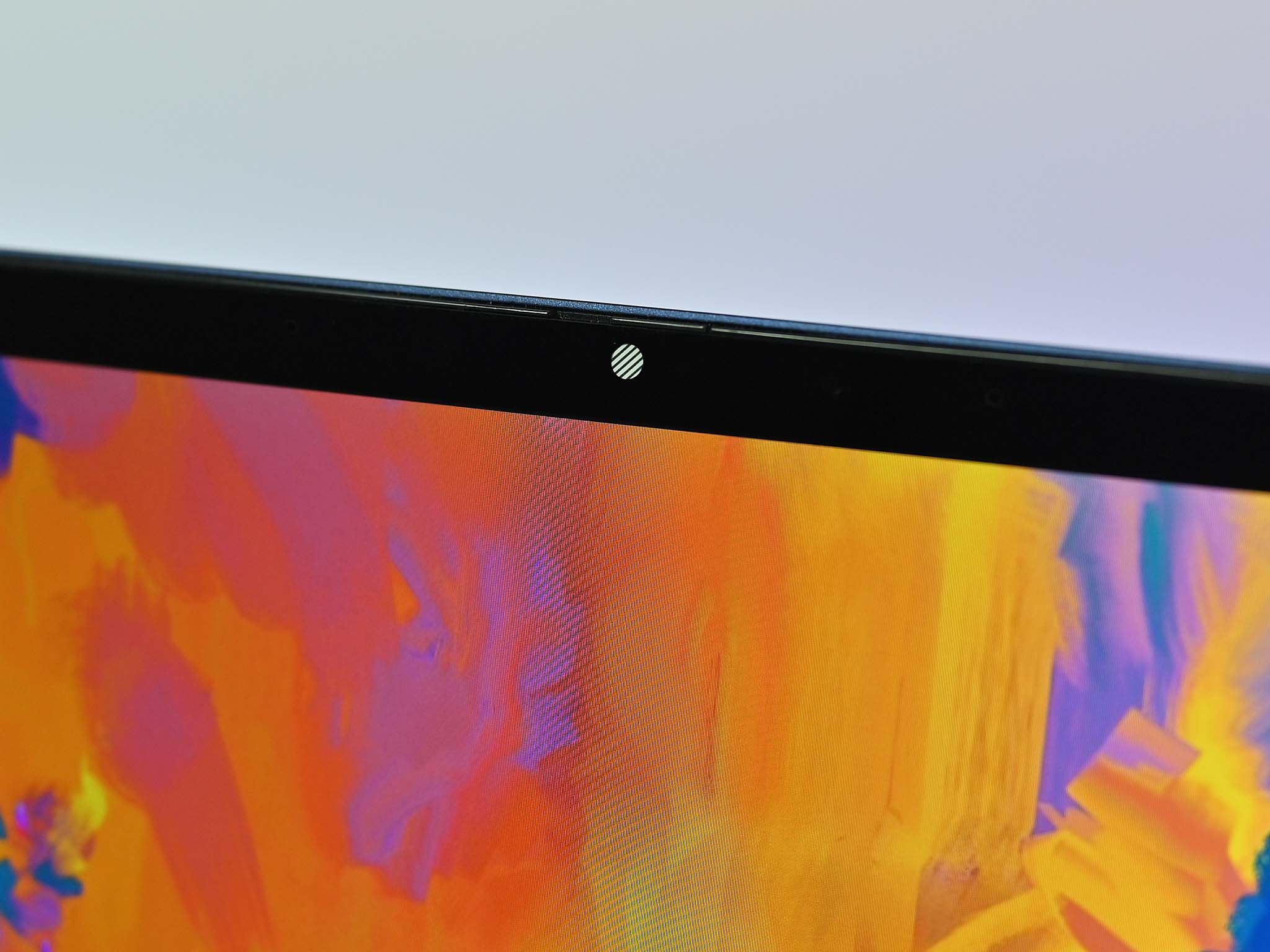
HP did manage to squeeze in Windows Hello infrared (IR) for the 720p front-facing camera along with a physical privacy slide. It's rare to get all three of those in a top-firing configuration, and it's nice to see here. Camera quality, however, is just OK, but it gets the job done for video conferences. Dual noise-canceling mics and HP's keyboard controls also go a long way for business users.
As mentioned earlier, HP also offers its Sure View technology as an option now. With a single button click, a combination of software and hardware will mask your display from onlookers in public spaces. It's a whimsical technology that HP has been mastering these last few years. Bonus: HP Sure View displays are 120Hz refresh rates, which gives smoother animations than traditional 60Hz screens.
Type like a pro
HP Elite Dragonfly keyboard, fingerprint reader and trackpad
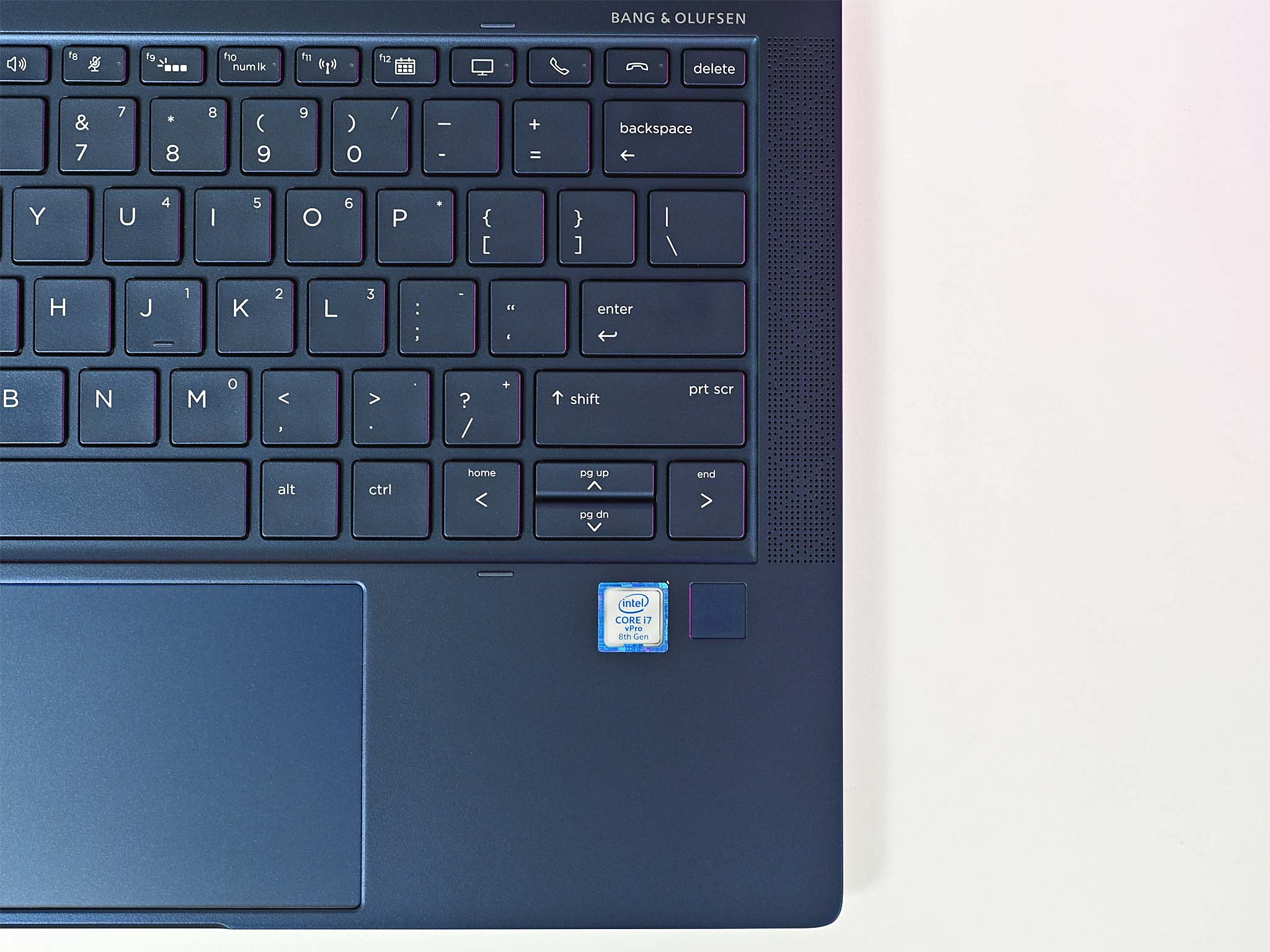
HP has a good history of banging out some of the best keyboards around offering something distinct but still performant compared to Lenovo.
Design is typical of the EliteBook series with large, square chicklet keys The Dragonfly's keyboard is very quiet to type on as HP focused on making sure that was a priority for business users in a meeting. Travel is decent and feels around 1.2 mm.
The white lettering against the matching blue keys dramatically helps visibility. That's only augmented by the solid two-stage backlighting.

The trackpad is large, glass, and driven by Microsoft Precision drivers. The clicking is also fantastic rivaling Microsoft's latest Surface Laptop 3's design. That said, I did have some issues with rapid two-finger scrolling and sometimes the trackpad not registering. It's a minor oversight that some software tweaking or a driver update could fix.
Since HP offers a privacy shutter for the 720p web camera that means in use, it also negates Windows Hello. Luckily, HP sticks a fingerprint reader on the keyboard deck to use as an alternate. It worked flawlessly in my testing.
Overall, typing and input on the Elite Dragonfly are above average and one of the more satisfying of premium business Ultrabooks.
Supreme sound
HP Elite Dragonfly quad speakers set the bar
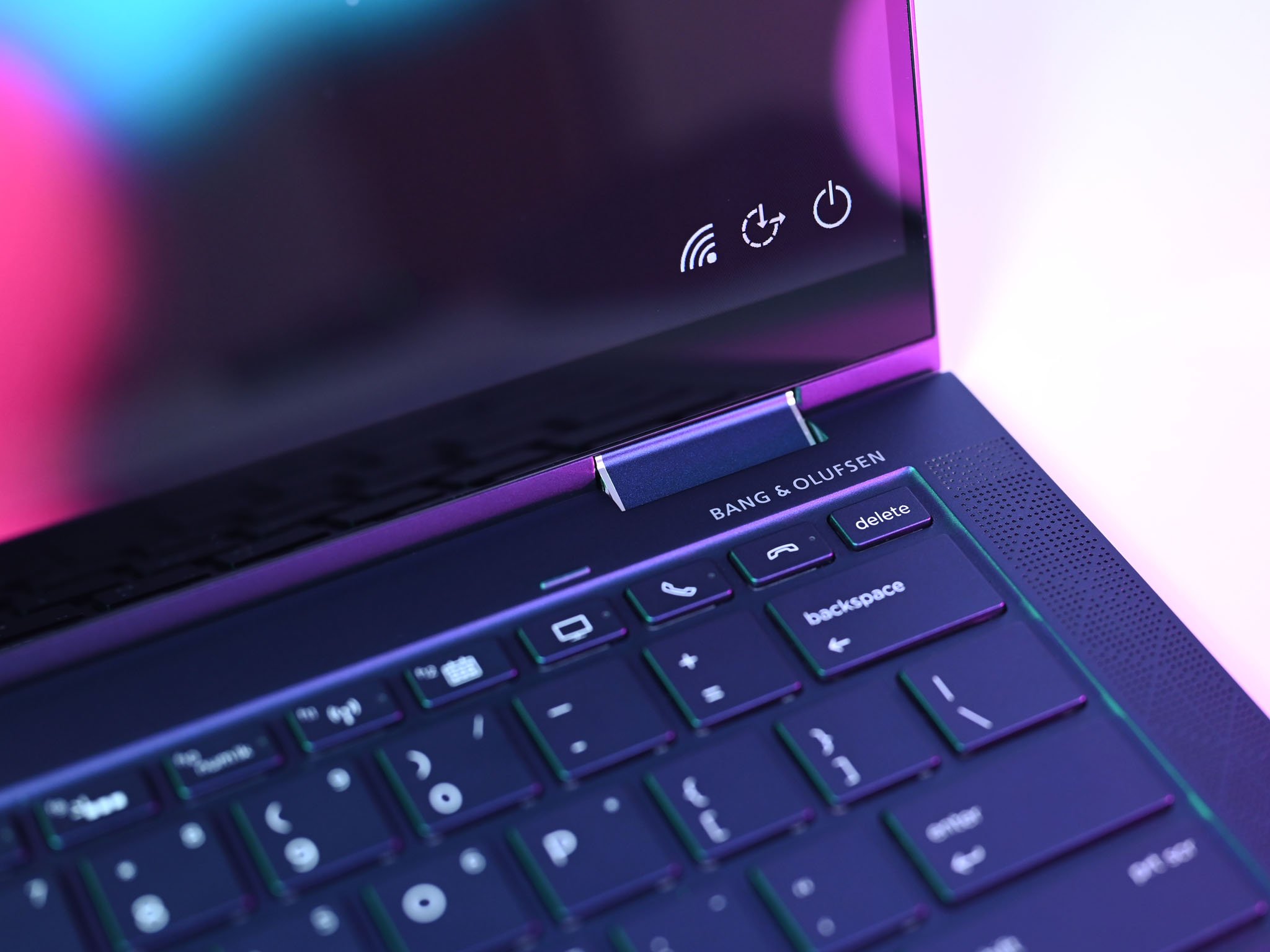
HP has been working hard lately on audio as exemplified in its monstrous ENVY 32 all-in-one. While there is no such thing as audio being too good, the Elite Dragonfly is easily the best of any business laptop available.
HP has four speakers on the Dragonfly: two on the top deck flanking the keyboard and two on the bottom front. Such a layout is crucial for 2-in-1, where the sound can follow the different convertible positions. While four speakers are great, HP also added four discrete amplifiers, which increase loudness without distortion.
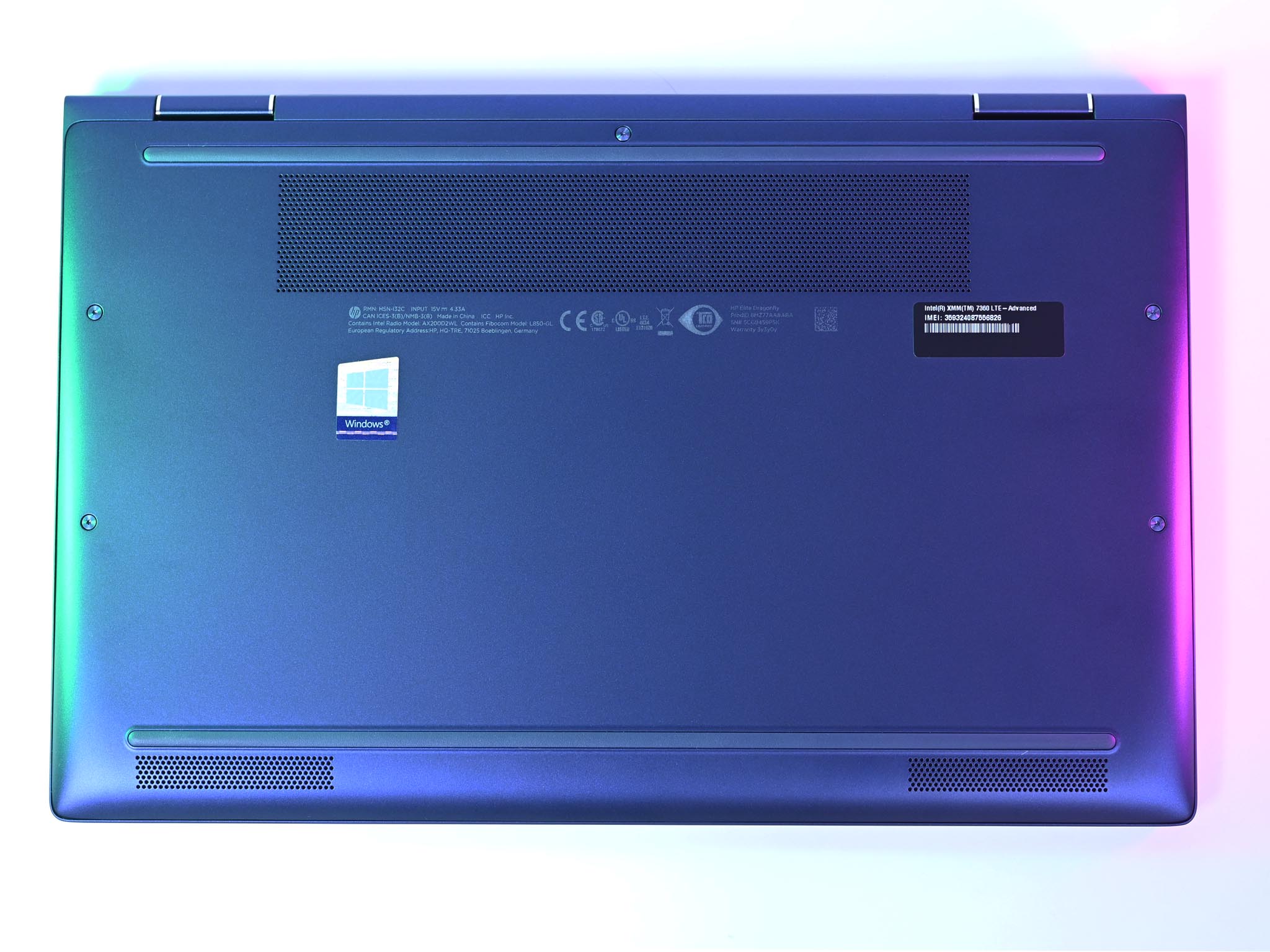
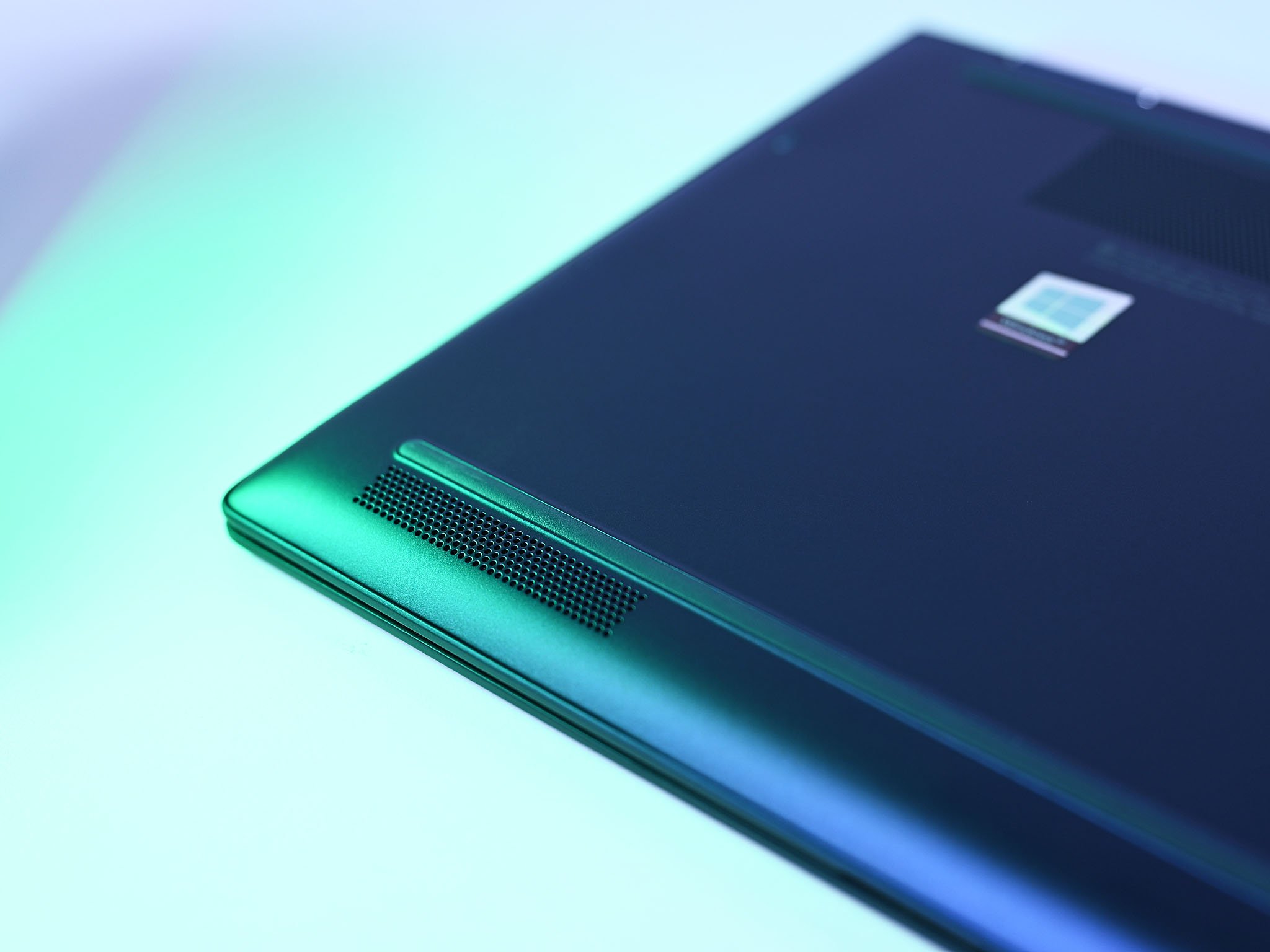
When combined with Bang & Olufsen software (including an equalizer), the HP Elite Dragonfly delivers exceptional audio no matter how you use it.
Draw if you want to
HP Elite Dragonfly inking
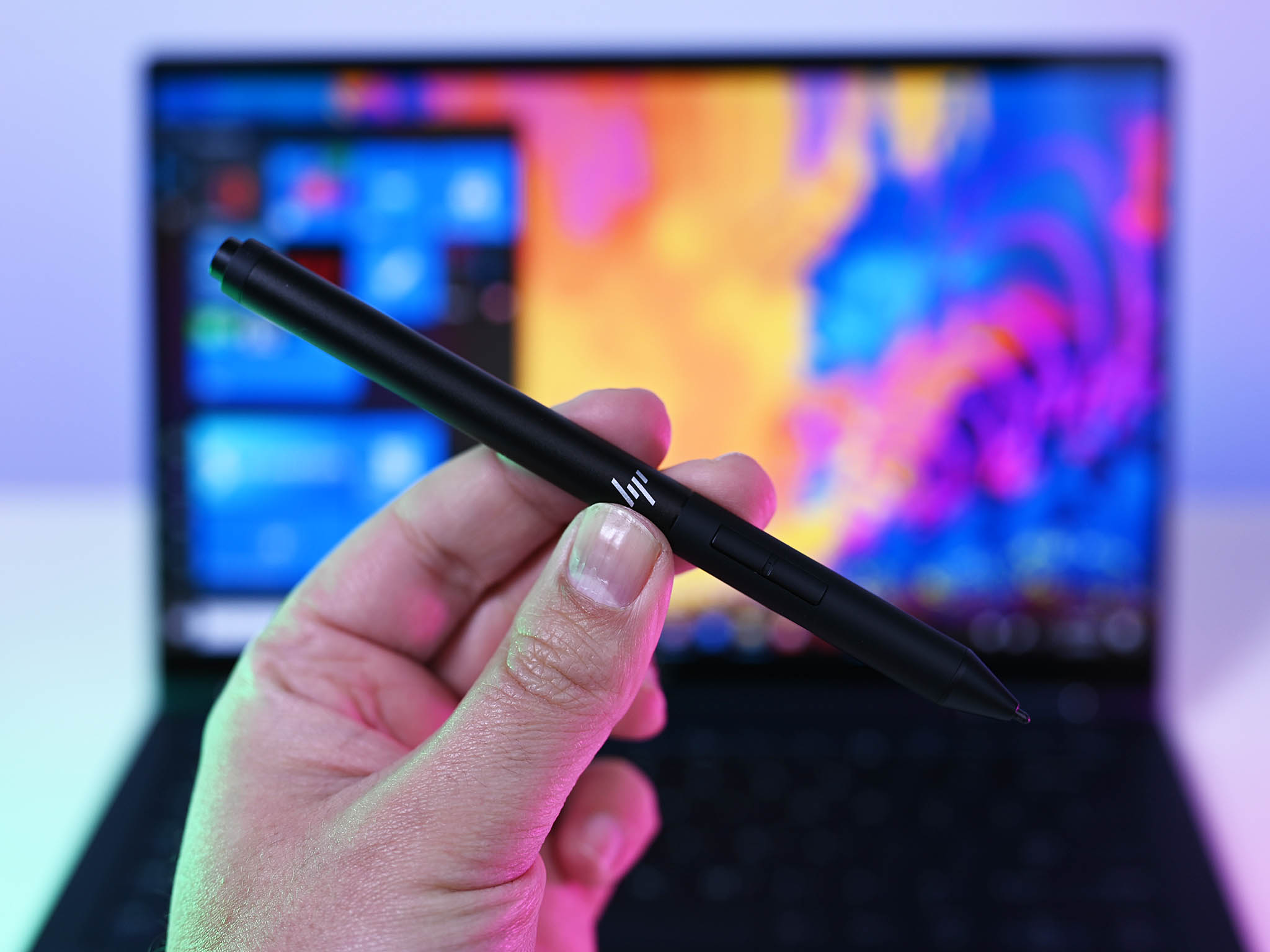
For those who prefer to use a pen with their convertible laptops, HP has you covered with a $75 optional third-generation Wacom AES 2.0 pen.
I have mixed feelings on HP's pen. For performance, it is excellent. Wacom's AES technology is smooth, accurate, and reliable, and it feels great on the Elite Dragonfly's display. There's a top button (Bluetooth) that can be programmed.
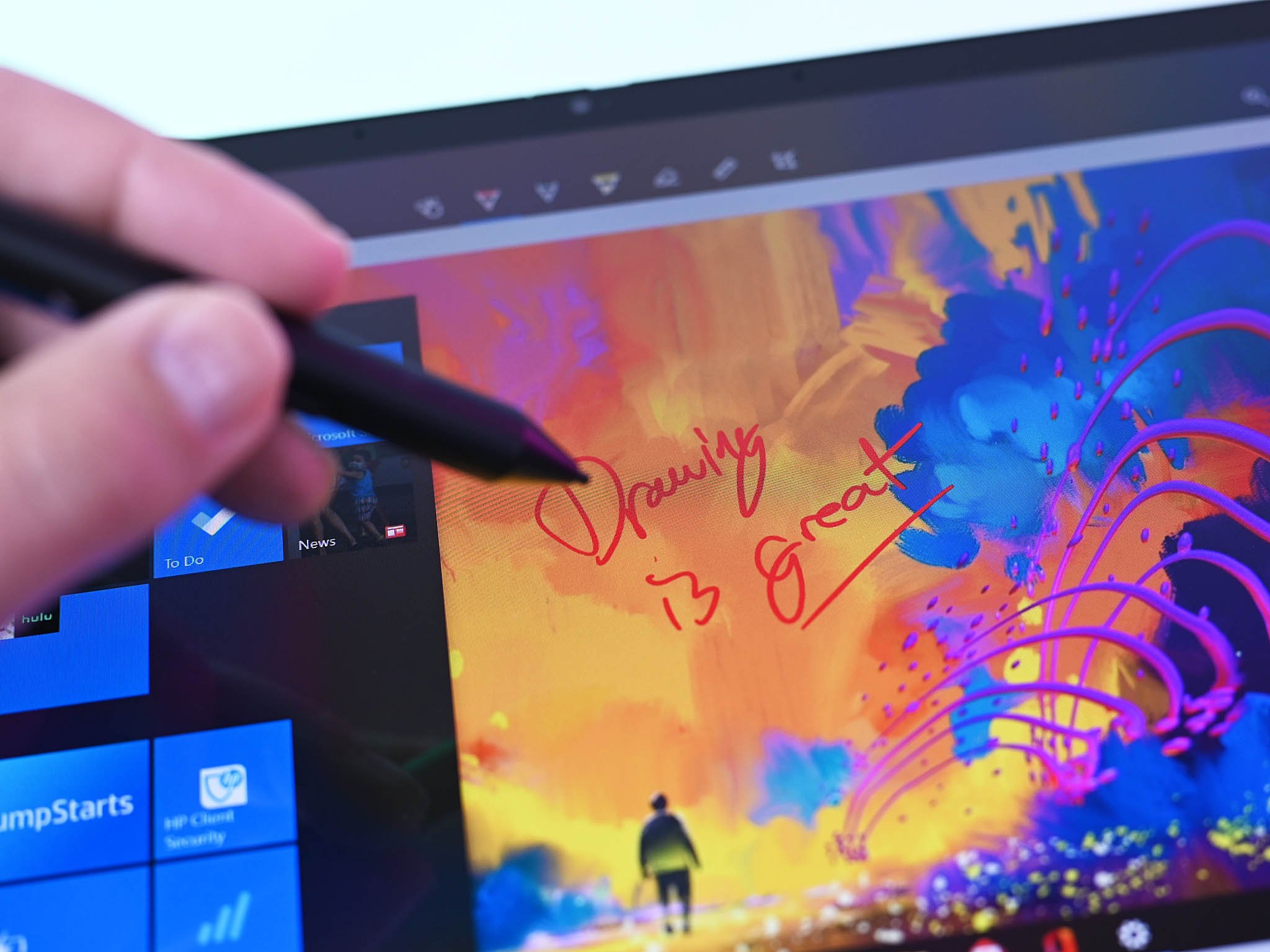

While there's no real way to stick the pen to the Dragonfly, HP does include a lovely leather laptop sleeve in the box. That sleeve has a pen holder that lets you quickly and elegantly transport it.
My issue is battery life. HP opts for a Type-C charging port on the pen instead of a battery. That means you can easily use the Dragonfly's included 65-watt charger to top it off. It also means that the pen quickly dies — usually in a few weeks — if you don't use it. For people who only use the HP Pen on occasion, this results in a frustrating experience.
A bit warm, a bit noisy
HP Elite Dragonfly performance, battery, and heat
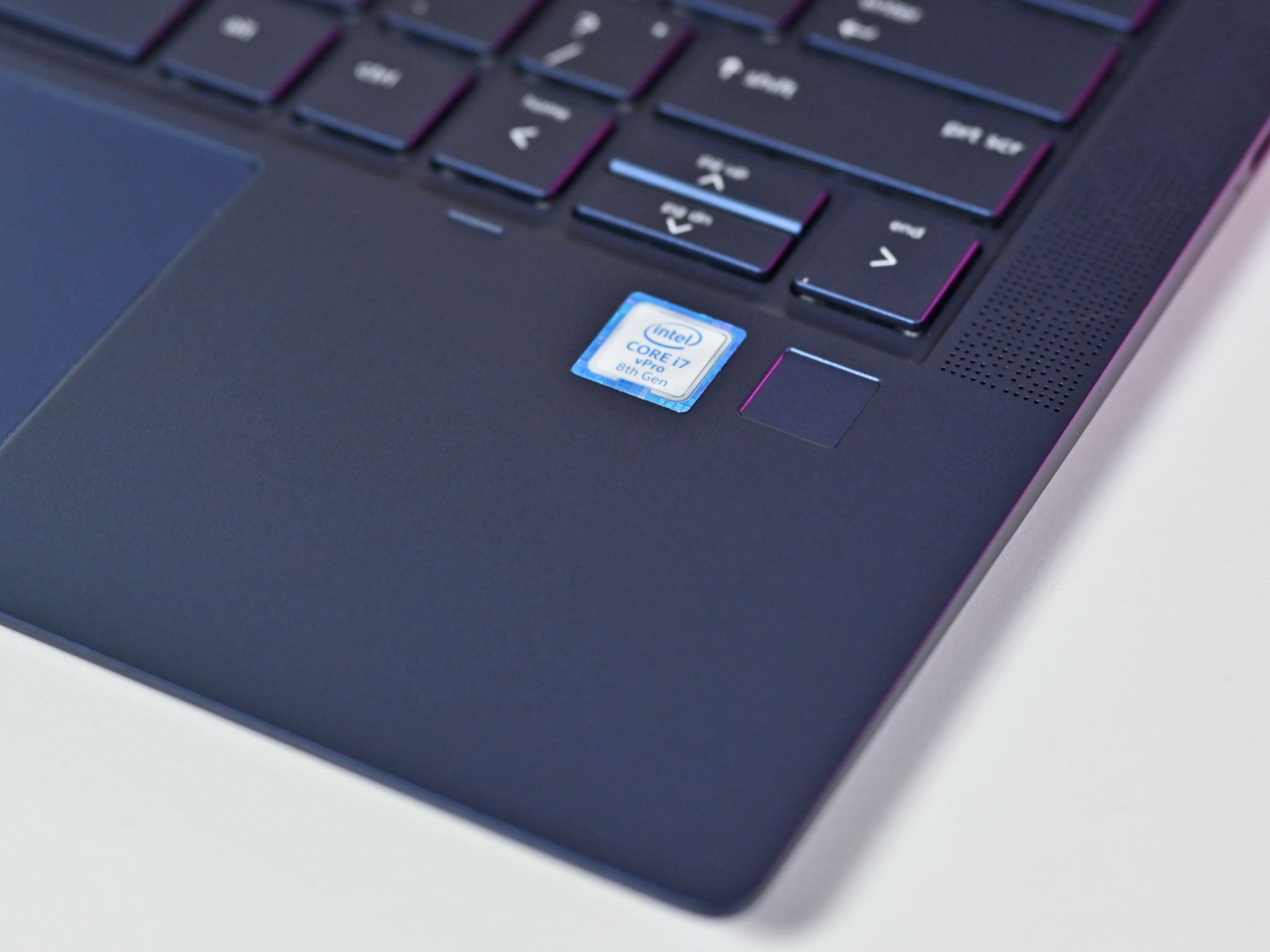
Performance of the Dragonfly is nothing spectacular or unique and falls within expectations of an 8th Gen i7-8665U. A 10th Gen processor would do much better, but due to the current lack of Intel vPro on that series and HP's target audience, the 8th Gen will have to do.
For SSD and RAM, things are a bit mixed. HP is, unfortunately, using older DDR3 instead of the newer, power-optimized LPDDR4. It works well, but this level of a laptop would benefit from the power-savings of LPDDR4.
CPU
Geekbench 5.0 Benchmarks (Higher is better)
| Device | CPU | Single core | Multi core |
|---|---|---|---|
| HP Elite Dragonfly | i7-8665U | 1,125 | 2,942 |
| LG gram 17 (2020) | i7-1065G7 | 1,208 | 3,349 |
| LG gram 17 (2019) | i7-8565U | 1,130 | 3,023 |
| Acer Swift 5 (SF514-54T) | i7-1065G7 | 1,202 | 3,600 |
| Surface Pro 7 | i7-1065G7 | 1,205 | 4,852 |
| Surface Laptop 3 13.5 | i5-1035G7 | 1,177 | 4,413 |
| Surface Laptop 3 15 | AMD Ryzen 5 | 769 | 2,720 |
| Dell XPS 13 2-in-1 7390 | i7-1065G7 | 1,209 | 3,571 |
| Dell XPS 15 7590 | i9-9980HK | 1,176 | 7,624 |
| Dell Inspiron 13 7390 2-in-1 | i7-8565U | 1,111 | 2,965 |
PCMark
PCMark 10 Express
| Device | Score |
|---|---|
| HP Elite Dragonfly | 3,716 |
| LG gram 17 | 4,157 |
| Acer Swift 5 (SF514-54T) | 4,415 |
| Surface Pro 7 (i5) | 3,992 |
| Surface Laptop 3 15 (AMD) | 4,006 |
| Dell XPS 13 2-in-1 (7390) | 4,427 |
| Dell Inspiron 13 7390 2-in-1 | 3,764 |
| Dell XPS 15 7590 | 5,521 |
| Dell Precision 3541 | 3,906 |
The PCMark 10 test measures how well a laptop handles several everyday tasks. The Elite Dragonfly is below most current 10th Gen Intel U-series processors, which is expected.
Cinebench
Cinebench (R20) (Higher is better)
| Device | CPU | Range |
|---|---|---|
| HP Elite Dragonfly | i7-8665U | 1,146 to 1,258 |
| LG gram 17 | i7-1065G7 | 1,079 to 1,199 |
| Acer Swift 5 (SF514-54T) | i7-1065G7 | 1,361 to 1,400 |
| Lenovo ThinkPad P53 | Xeon E-2276M | 2,686 to 2,701 |
| Surface Laptop 3 13.5 | i5-1035G4 | 1,584 to 1,606 |
| Surface Laptop 3 15 | i7-1065G7 | 1,703 to 1,745 |
Repeatedly running Cinebench R20 can determine how well a laptop stands up to sustained load.
SSD
CrystalDiskMark (Higher is better)
| Device | Read | Write |
|---|---|---|
| HP Elite Dragonfly (Optane) | 2,124 MB/s | 548 MB/s |
| LG gram 17 (2020) | 3,477 MB/s | 2,900 MB/s |
| LG gram 17 (2019) | 536 MB/s | 500 MB/s |
| Surface Laptop 3 15 | 2,028 MB/s | 806 MB/s |
| Surface Laptop 3 13.5 | 2,338 MB/s | 1,583 MB/s |
| Acer Swift 5 (SF514-54T) | 1,641 MB/s | 1,025 MB/s |
| Lenovo ThinkPad X1 Extreme (Gen 2) | 3,416 MB/s | 3,016 MB/s |
| Lenovo ThinkPad P53 | 3,567.23 MB/s | 2,813.25 MB/s |
| Lenovo ThinkPad P52 | 3,120 MB/s | 1,551.5 MB/s |
| Dell XPS 15 7590 | 3,000 MB/s | 2,796 MB/s |
| MSI PS63 Modern | 3,300 MB/s | 1,875 MB/s |
.
The SSD is Intel Optane, which effectively provides 32GB of cache in addition to the 477GB of actual storage. Optane is supposed to increase the speed of your more frequently launched apps by using that 32GB as a buffer. That makes testing a bit tricky as real-world read and write sequential tests seem to underperform, especially on write speeds (550MB/s) where the read speed (2,100 MB/s) is quite good. Of course, buyers can purchase this laptop without Intel Optane at a lower price, but Optane should be great for those who have specific work routines.
Heat, fan noise, and battery are also a bit varied. Battery life average around 7 to 8 hours of real-world usage with LTE and Wi-Fi. That result is with the larger 4-cell 56WHr battery instead of the smaller (and lighter) 2-cell 38WHr, which is quite low. Near 8 hours battery life is effectively all-day for most people but nearing 10 hours would be preferable. Of course, opting for a Core i5 processor could possibly extend that.
The Elite Dragonfly's fan also comes on quite often, and the laptop does run warmer than most Ultrabooks in the class. Sometimes when you close the lid, the cooling continues to run until the system reaches its threshold. So, while typing is quiet, the fan, unfortunately, is, at the very least, persistent and audible.
This shouldn't be a problem
HP Dragonfly 4G LTE woes
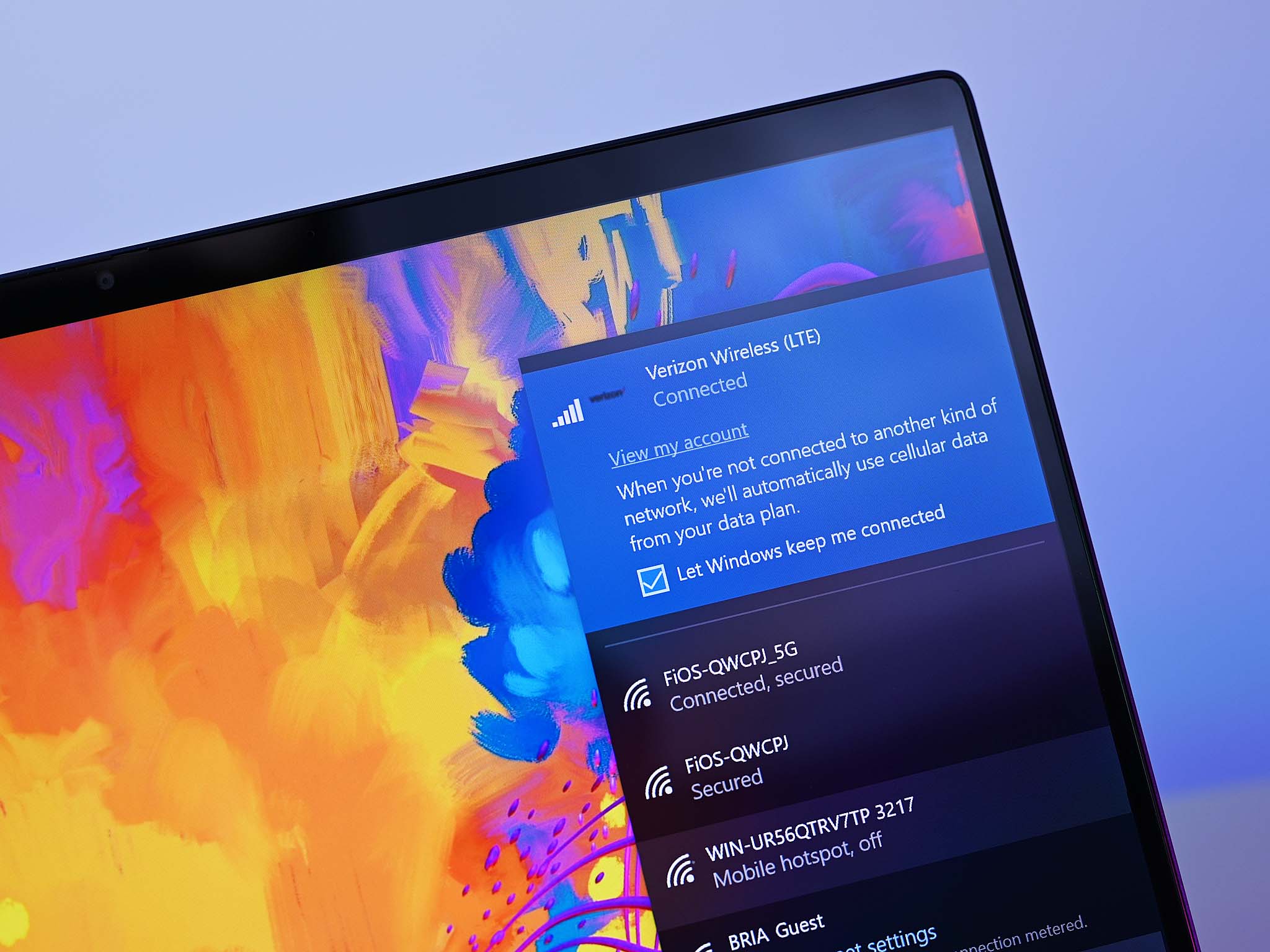
I'm glad HP sent the optional 4G LTE-equipped Dragonfly over for review as I'm a big fan of always-connected PCs. The Dragonfly has a simple SIM tray on the side that doesn't require a pin tool to open, which is excellent. Just drop in the SIM, and the OS is good to go (there is no eSIM support, however).
Reception and throughput of the Intel XMM 7360 modem are exceptional. Whether it was Sprint, T-Mobile, or Verizon, the Elite Dragonfly hit near 60 Mbps down with only 3 (out of 5) bars of reception.
The issue, however, is Windows power management and this modem. HP had quite a few bugs with this modem when I first received my review unit, including the modem altogether dropping out and disappearing until I rebooted. That problem has been fixed, but it's still not uncommon for the Elite Dragonfly to resume from sleep, and the LTE modem is unable to connect to my provider (again, a reboot fixes this).
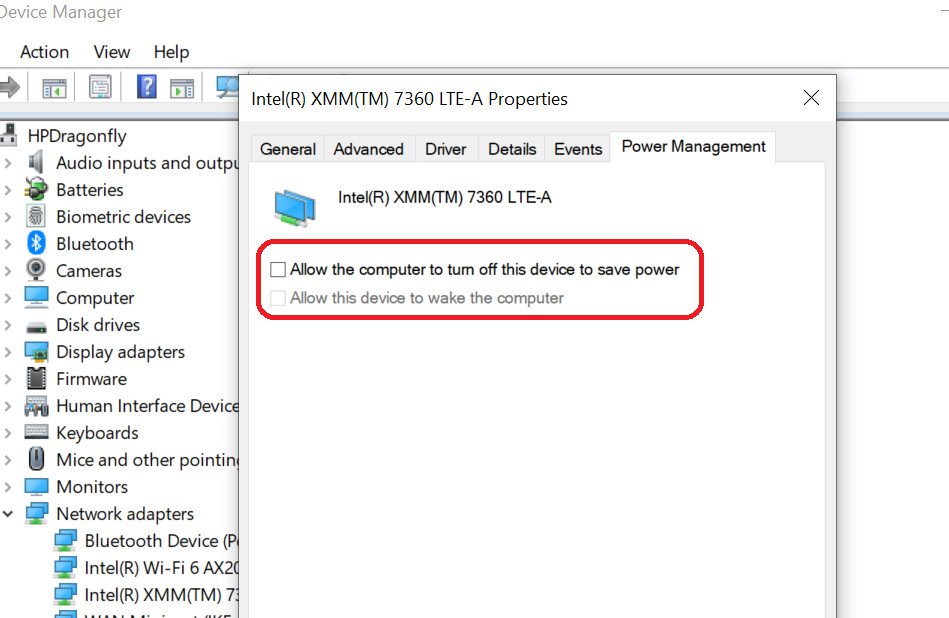
I found that disabling Windows power management for the LTE modem seems to address this issue, but the user shouldn't have to do this, and there's likely a good reason why LTE modems have power-saving features enabled. Reliability is one area where Qualcomm Snapdragon PCs still beat Intel systems as those integrated LTE modems never have this issue.
The good news is HP and Intel should be able to figure this out via software and a driver update. But so far, they have not, and I have trouble recommending the 4G LTE option even if I find it to be an impressive feature.
HP is on to something here
Buy or not? HP Elite Dragonfly is almost amazing
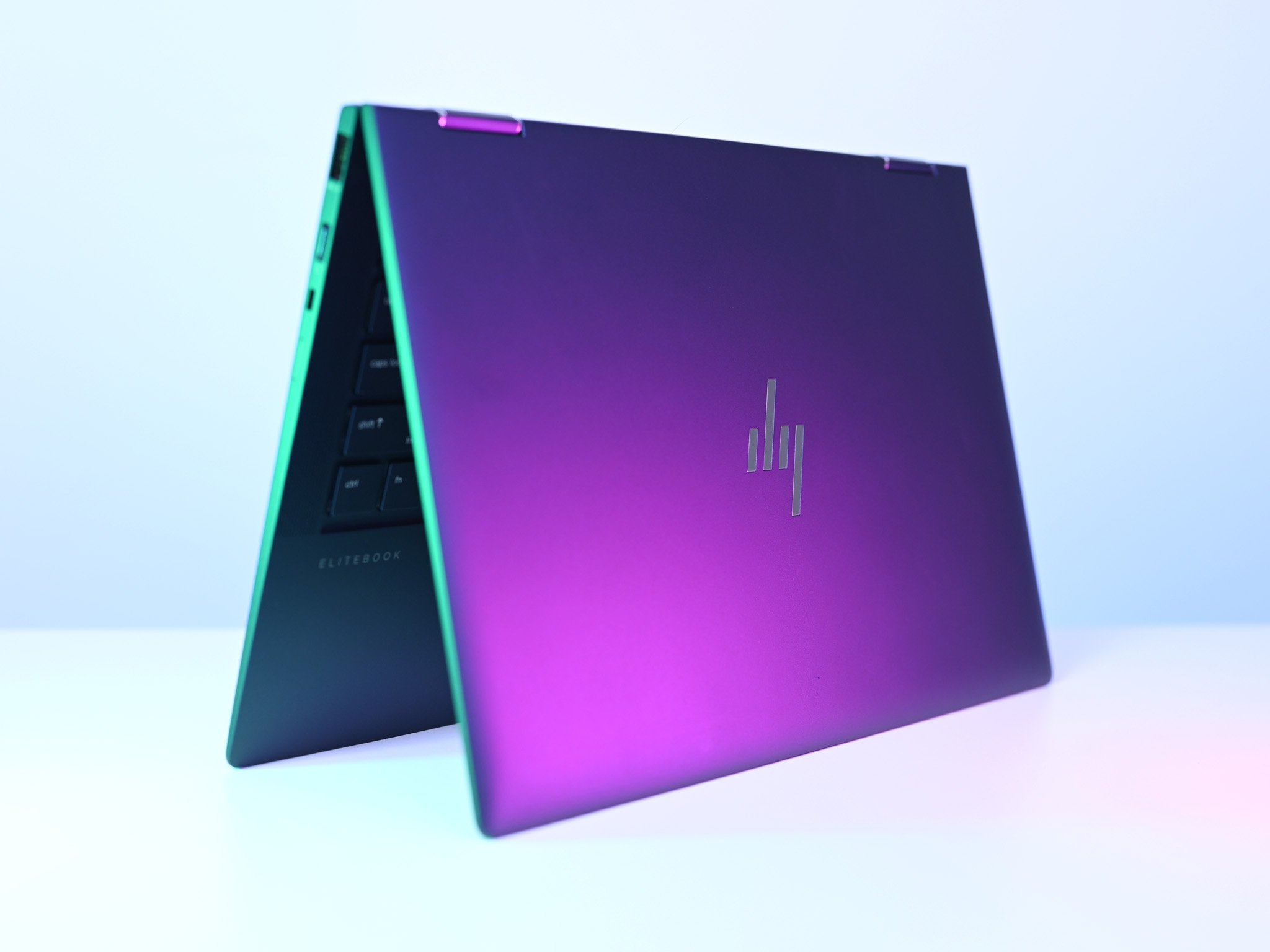
HP is on to something with the Elite Dragonfly. The design, the features, and the build quality all make it one of the most beautiful laptops I have used in the last year. The Dragonfly blue color scheme gives this laptop a unique look, and it has all the features anyone could want in a convertible "pro" business laptop. There are some great ideas here.
My chief complaints about it are mostly teething issues. The 8th Gen processor is not HP's fault, but it's still regrettable as Intel's 10th Gen chips have been in my experience far more reliable and better than 8th Gen "Coffee Lake." Of course, HP will refresh to 10th Gen vPro as soon as they are announced, so your best bet is to wait for that.
Battery life is also merely OK – not bad, but not fantastic either. The fan noise and heat, however, could use a better thermal solution as this laptop should not be this warm or loud. The same goes for RAM, which holds back that battery life.
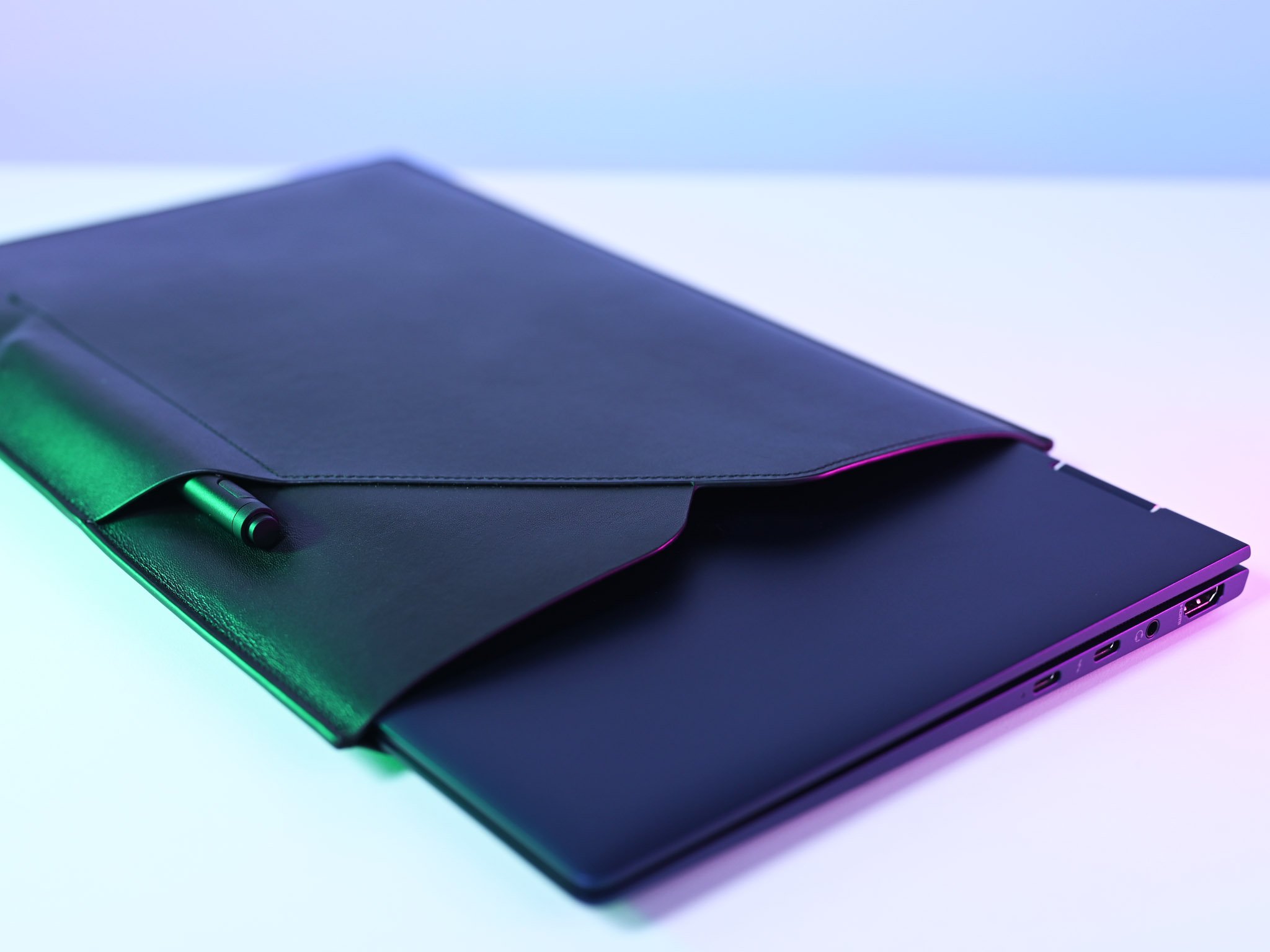
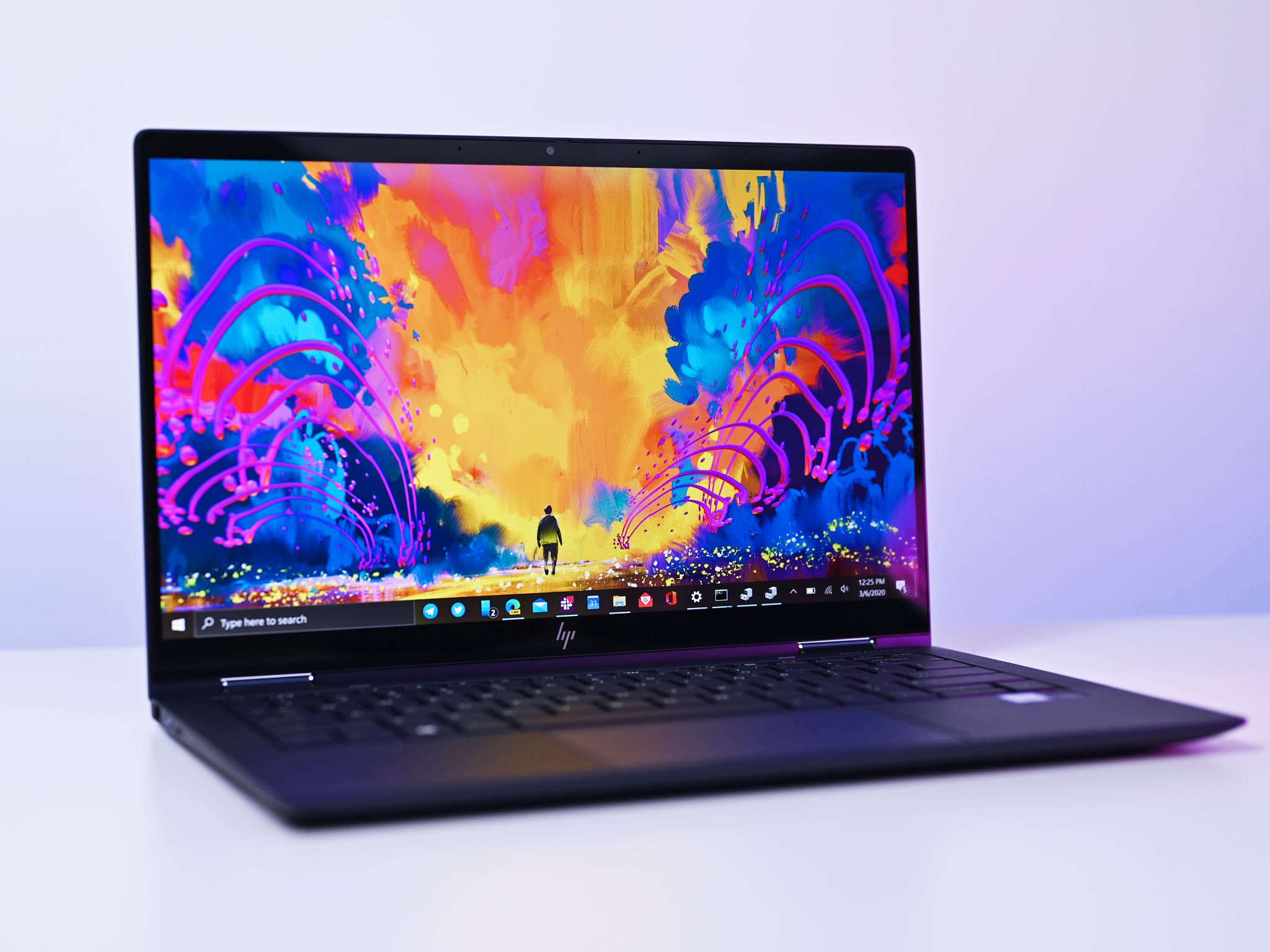
The 4G LTE experience is very disappointing for reliability, and I'd like to see HP and Intel figure that out.
Speaking in favor of the Elite Dragonfly is the display, keyboard, ports, inking, and the leather case, which are all top of the line and make using this laptop a real pleasure. The speakers and dual Windows Hello options (including that privacy shutter) go above and beyond expectations.
HP also deserves praise for that anti-reflective display, oleophobic coating on the chassis, and using recycled plastics to make the Elite Dragonfly.
HP has big plans for the Elite Dragonfly. A 5G version is already on its way for late 2020 (that uses, thankfully, a Qualcomm modem). All HP needs to do is sort out some minor quirks, and the Elite Dragonfly could quickly become their best all-around (albeit, pricey) business laptop to date. I'll be excitedly looking forward to its evolution.
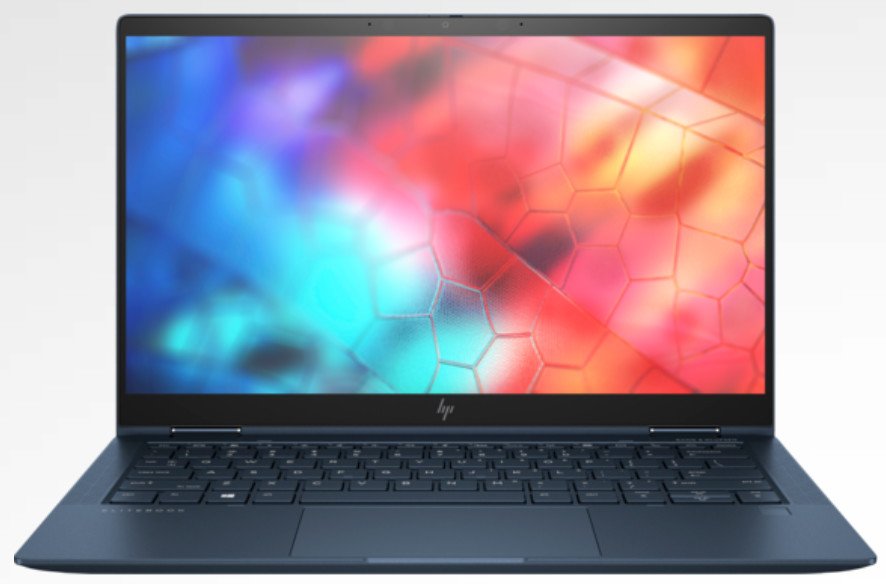
An excellent design with some early quirks
HP's pricey Elite Dragonfly brings an outstanding design in a light and elegant package. With an exceptional display, keyboard, audio, and packed with business features, HP has made one of the best-looking laptops around. Some early quirks hold it back from perfection, leading us to recommend it but with some caveats.

Daniel Rubino is the Editor-in-chief of Windows Central. He is also the head reviewer, podcast co-host, and analyst. He has been covering Microsoft since 2007 when this site was called WMExperts (and later Windows Phone Central). His interests include Windows, laptops, next-gen computing, and wearable tech. He has reviewed laptops for over 10 years and is particularly fond of 2-in-1 convertibles, Arm64 processors, new form factors, and thin-and-light PCs. Before all this tech stuff, he worked on a Ph.D. in linguistics, performed polysomnographs in NYC, and was a motion-picture operator for 17 years.
